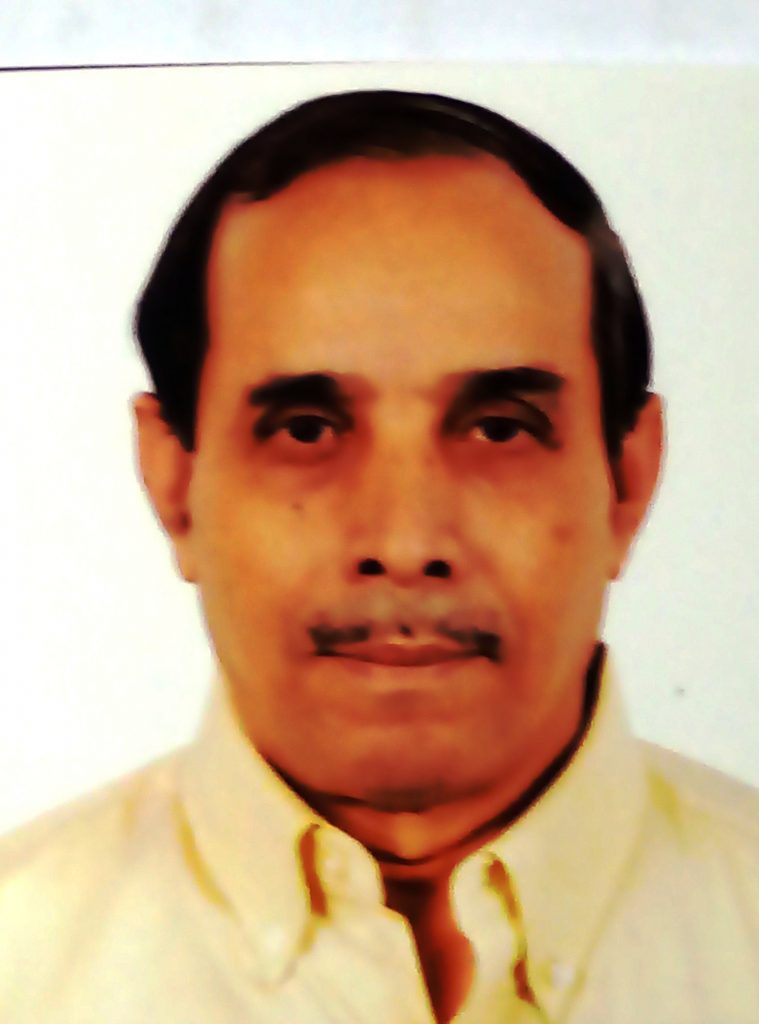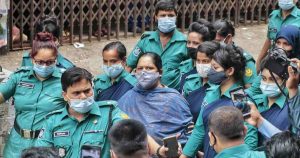Mostafa Kamal Majumder
From the early eighties I started getting offers to contest elections of the Jatiya Press Club Managing Committee. I always sidetracked such offers because I felt I had little time to spare in Press Club activities. I got offer also from the Dhaka Union of Journalists to contest elections which I politely avoided. During that period unionism was a kind of dedicated work and those who took part in union elections were by and large less active in professional work at their respective offices. But Press Cub was the domain of professionally active and successful journalists. Those who contested elections for key posts in the Jatiya Press Club used to be pursued by other journalists to do so. Spontaneous participation in elections for key posts was few and far between.
I however found that The Bangladesh Times for which I worked had a sizeable number of members in the Dhaka Journalists Housing Cooperative Society but was not represented in its executive Executive Committee. I mobilised them for an election that was due in 1987. The leadership of the society decided to get the next committee selected mutually. None from The Bangladesh Times was in their mind. I along with some members joined the Annual General Meeing and demanded election. The Housing Cooperative Society leaders instead offered to accommodate a representative from The Bangladesh Times, and I was made Joint Secretary.
I found that the society had a plot of little over of 23 bighas of land sold and registered in its favour by the government way back in 1981. But as 65 percent of the price still remained unpaid, the society could not take possession of the land for distribution among its members. Leaders of the society who were also involved in union politics avoided taking any step that would require the 188 plus members to pay Taka 21000-plus each to get possession of the land. They considered such a step would negatively affect their union election prospects because the society members were also voters in the union.
I persuaded Society Secretary Syed Abdul Qahhar at one Executive Committee meeting to adopt a resolution and ask members to pay the remainder of the price of land in installments. Each member paid Taka 9,500 initially when the land was allotted and registered. President Justice Abdus Sattar who executed the registration of the land earmarked during the rule of his predecessor President Ziaur Rahman, rejected a plea to exempt the price of the land. Instead he offered to give an opportunity to pay the price of the land in installments. I said I do not contest union elections and was not worried about its votes. The resolution was adopted. Society president the legendary Gias Kamal Chowdhury and member Ruhul Amin Gazi were unhappy with the resolution but did nothing to obstruct the decision as it was passed.
At that time payment of Taka 21000 plus by most of the journalists was a difficult proposition because their salary earnings were limited. And those who were relatively in lower income bracket wanted the Society Leaders to pursue the government with a view to exempting the payment. Syed Abdul Qahhar and I faced stiff resistance from such members both at the Jatiya Press Club at different newspaper offices including the Dainik Bangla and The Bangladesh Times.
One day Dhaka Union of Journalists general secretary Akram Hossain Khan wanted to know from me what decision we have taken at the Housing Society that so many members were speaking against. I explained to him that the Housing Cooperatives members will gain immensely if they pay the price and take possession of the land. Keeping in view the skyrocketing price hike of construction materials after the adoption of annual national budget, the saving could be at least Taka one lakh each year, I told him. Akram Khan got the point and said he would manage protesters not only from the Daily Ittefaq, his own house, but also other newspapers. Society president Gias Kamal Chowdhury also facilitated the process by telling members at one AGM that the government would in no way exempt the price of the land. He said after a helicopter trip with the chief executive of the government of that time, a copter pilot told him of the abhorrence of journalists by the said chief executive. One government minister had proposed to him to arrange earth filling of the low land that was allotted to the journalists. The chief executive said in reply, ‘you can never satisfy the journalists’ using a slang word. The journalist community had earlier refused to take him to the Jatiya Press Club.
The Housing Cooperatives members paid off the price of land in three equal installments and ultimately mutation of the land was made in favour of the 188 land-owning members. I saw the opportunity to create physical facilities to facilitate the construction of buildings by society members. Syed Abdul Qahhar was very cooperative as I approached the Dhaka Electric Supply Authority (DESA) to extend electric lines, and the Titas Gas to extend gas connections. Both organisations lent cooperation and made the basic work of planning for the same. Finally I approached the Dhaka Water Supply and Sewerage Authority (WASA) for installing water supply lines. We were lucky that we approached them when they were preparing their Annual Development Plan for the subsequent year. Initially they said installation of a water supply line was not justified as there was only one of two tin-sheds in the Journalists Housing Area. I told the Chief Engineer, you give water and will find construction of at least 50 building to start in no time. He reluctantly agreed and asked for inclusion of the project in the ADP.
Meanwhile, I approached the Urban Development Directorate which was preparing physical plans for the Upazila Headquarters, to prepare a layout plan for the Journalist residential area. Its Director Anil Chandra Das was close to me as we came across many times before at seminars and other programmes on urban development, and also approached him to do news stories. The Chief Engineer of the directorate was cooperative and wanted me to ask Director Anil Chandra Das for a job for his son. The area plan was done.
I succeeded to get another area development plan done from the planning section of the Rajdhani Unnayan Katripakhya. Member Planning of RAJUK Zakir Hossain was known to me for a long time. He had done the area plan for Baridhara. He also had the experience of doing a plan for a privately owned residential area like Lalmatia. Zakir Hossain did a beautiful circular layout plan for the Journalist Residential Area and gave some very good advices about the utilisation of land.
However the plan prepared by the Urban Development Directorate was implemented when the plots owned by the cooperatives members were demarcated in 1991 in my absence. I was in London on a month-long internship with the Panos Institute when the plots were demarcated. The circular plan made by RAJUK was not implemented on the wrong presumption that a 40-feet wide ‘halot’ (land demancation line) that ran through the middle of the area should remain untouched. Some land was wasted and the vertical and horizontal roads took more space because of the rejection of RAJUK’s circular plan.
Members of the society were happy as their years of dream home did come close to a reality. One thing may be mentioned here that most of the members were in favour of 10 to 12-feet roads inside the residential area. I told them at a meeting, called for the purpose, that the value of their plots of land would be double if the road width was 20-feet allowing vehicles to cross and trucks and ambulances to freely move to and from every house. They agreed to my suggestion.
At the time of physical hand-over of the plots after the demarcation however it appeared that the plot locations had slightly changed. And some members vehemently protested against this. Some members wanted that the original locations of their plots should be maintained regardless of the numbers of the plots of land. The protest subsided as Society leaders urged members to take possession of their plots and start development activities. Journalists who had experience of work of five years or more and did not have a plot of land in the city were selected to become members of the dream housing society. Of the 200 plus members however only 188 were allotted plots because of the scarcity of land.




